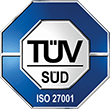The ServiceNow Utah release placed great emphasis on enhancing its applications such as Environmental, Social, and Governance (ESG), IT Operations Management (ITOM), Security Operations (SecOps), Employee Service Management, IT Service Management (ITSM), Customer Service Management (CSM), and so on that enable organizations to transform their workflows.
And the upgrades made to Flow Designer, Process Automation Designer, App Engine, Automation Engine, Next Experience UI Builder, and a few more can improve developers’ productivity.
The ServiceNow San Diego release leaned more towards improving platform user productivity. The Next Experience user interface and the Robotic Process Automation (RPA) hub, among other features, were integrated into the platform.
Also, the ServiceNow CSM, FSM, and ITSM solutions had some major enhancements. For instance, a profanity filtering feature was added to the ServiceNow CSM application to automatically detect offensive words used by agents while interacting with customers.
In the ServiceNow Rome release, improving employee experience was one of the major objectives. Employee Center and Employee Journey Management, a part of the HR Service Delivery application, were the two new significant capabilities that were brought in as part of this objective.
In the ServiceNow Quebec release, low-code development was one of the areas that took center stage. The App Engine Studio application, a low-code tool that is a part of creator workflows, was introduced to enable citizen developers to build applications faster.
The HR Service Delivery (HRSD) module, which helps organizations cater to employee requirements, had new significant features and enhancements in the ServiceNow Paris release. The Agent Workspace was introduced to allow HR agents to interact with the employees through the dashboard, understand their requests, and solve them immediately with AI-powered recommendations.
The ServiceNow Orlando release focused more on Automation, Analytics, Predictive Intelligence, and AI. It improved the automated incident or task grouping and classification capabilities across ServiceNow solutions.
Additionally, it rolled out Mobile Analytics (part of Now Intelligence products and later named “User Experience Analytics” in the Paris release -2020) to enable better management of mobile and web applications used within the organization.
The ServiceNow Madrid release rolled out exciting new features. One of the features was the ServiceNow Incident Management Mobile application. This allowed the resolution team in an organization to view, manage, and resolve incidents from anywhere and faster.
Also, the “Antivirus Scanning” feature was added to check for viruses and send alerts whenever a user uploads a file on the ServiceNow platform.
The ServiceNow Kingston release brought in Machine Learning capabilities, user experience, and no-code development.
As part of these focus areas, Agent Intelligence (later named “Predictive Intelligence” in the Madrid release – 2019) was one of the major applications to be introduced. The application uses supervised machine learning to automatically prioritize, categorize, and assign incidents to the relevant agent, thereby improving agent productivity and enhancing customer satisfaction.
The ServiceNow Jakarta release ensured better HR Service Management. The ServiceNow HR Service Management solution was renamed to HR Service Delivery (HRSD) and had new features in the Jakarta release.
“Enterprise Onboarding and Transitions” was a crucial feature that allowed the HR department to automate tedious procedures in the employee lifecycle management process.
The ServiceNow Istanbul release introduced the Automated Test Framework (ATF) to enable users to automatically test the functioning of their ServiceNow instance when they upgrade or customize the platform.
Furthermore, the ServiceNow platform’s performance and reporting capabilities were improved in this release.
Application development was made easy for citizen developers in the ServiceNow Helsinki release. The release introduced Flow Designer, which automates processes in a development environment.
The ServiceNow Geneva release introduced the UI 16, which includes new themes and a better navigation system to provide a seamless platform user experience.
Furthermore, the Studio Integrated Development Environment (IDE) was introduced to make developers’ lives easier. The IDE provides a variety of developer tools, such as text editors, compilers, debuggers, etc, in one development environment. This eliminates the need for developers to manually integrate each tool into their environment, saving them time and effort.
The ServiceNow Eureka release centered around enhancing the platform user experience. As part of this objective, the ServiceNow Service Creator was introduced, featuring a drag-and-drop option to enable users with no programming background to effortlessly build or modify applications.
One of the major features introduced in the ServiceNow Dublin release was the Vendor Performance Management application. The application enables organizations to monitor, analyze, and categorize vendors based on compliance, satisfaction, and reliability, thereby ensuring better vendor management.
The ServiceNow HR Service Automation application was also introduced in this release to help organizations automate a few of the tasks in the HR Service Management processes and enhance employee experience.
In the Calgary release, ServiceNow introduced a new Collaborative Workspace UI and the Application Creator to improve collaboration across the organization and enable non-technical developers to build applications easily. The release also enabled users to customize or edit reports generated on their ServiceNow platform.
The ServiceNow Berlin release concentrated more on users’ feedback in the ServiceNow community. Significant enhancements were made to the Software Asset Management (SAM) application and Field Service Management application (FSM) to help organizations ensure better software license and inventory management.
The ServiceNow Aspen release, the first release named after a city, brought in advanced disaster recovery and IT security management capabilities on the platform.
A debugging assistant was also introduced in this release to help developers identify and resolve issues in their workflows automatically.









